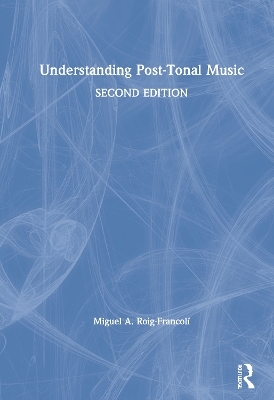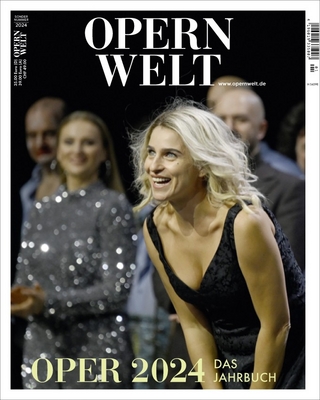
Understanding Post-Tonal Music
Routledge (Verlag)
978-0-367-35537-1 (ISBN)
Understanding Post-Tonal Music is a student-centered textbook that explores the compositional and musical processes of twentieth-century post-tonal music. Intended for undergraduate or general graduate courses on the theory and analysis of twentieth-century music, this book will increase the accessibility of post-tonal music by providing students with tools for understanding pitch organization, rhythm and meter, form, texture, and aesthetics. By presenting the music first and then deriving the theory, Understanding Post-Tonal Music leads students to greater understanding and appreciation of this challenging and important repertoire.
The updated second edition includes new "Explorations" features that guide students to engage with pieces through listening and a process of exploration, discovery, and discussion; a new chapter covering electronic, computer, and spectral musics; and additional coverage of music from the twenty-first century and recent trends. The text has been revised throughout to enhance clarity, both by streamlining the prose and by providing a visual format more accessible to the student.
Miguel A. Roig-Francolí is a Distinguished Teaching Professor of Music Theory and Composition at the University of Cincinnati College-Conservatory of Music.
Introduction: An Overview of Twentieth Century Compositional Styles
The Century of Plurality: Tonal, Post-tonal, Atonal, and Other Styles
The Stylistic Mosaic
Chapter 1. Pitch Centricity and Composition with Motivic Cells
Pitch Centricity
Diatonic Collections
Pentatonic Collections
Analysis 1.1. Debussy, "La cathédrale engloutie," from Preludes, Book I (Anthology, no. 1)
Analysis 1.2. Stravinsky, Introduction to Part I, from The Rite of Spring (Anthology, no. 4)
Chapter 2. Pitch Centricity, Equal Divisions of the Octave, and Symmetry
Interval Cycles and Equal Divisions of the Octave
Symmetrical Motivic Cells
Symmetry Around an Axis
Symmetrical Scales
Analysis 2.1. Bartók, "Song of the Harvest," from Forty-four Violin Duets (Anthology, no. 5)
Analysis 2.2. Bartók, "Whole-tone Scale," from Mikrokosmos, Vol. 5 (Anthology, no. 6)
Chapter 3. Introduction to Pitch-Class-Set Theory
Preliminary Concepts
Pitch-Class Sets: Orderings and Basic Relationships
Pitch-Class Sets: Further Properties and Relationships
Pitch-Class Set Theory: A Summary
Chapter 4. Analyzing Atonal Music
Analyzing Atonal Music
Analysis 4.1. Webern, "Five Movements for String Quartet," Op. 5, III (Anthology, no. 10)
Analysis 4.2. Schoenberg "Angst und Hoffen," No. 7 from Book of the Hanging Gardens, Op. 15 (Anthology, no. 11)
Chapter 5. Drawing on (and Reinterpreting) the Past . . .
Neoclassicism
Analysis 5.1. Stravinsky, Agnus Dei, from Mass (Anthology, no. 13)
Hindemith’s Theoretical and Compositional Premises
Analysis 5.2. Hindemith, Interlude in G, from Ludus tonalis (Anthology, no. 14)
Chapter 6. . . . And Inventing the Future
Ultramodern Aesthetics
Ives and Musical Borrowing
Analysis 6.1. Ives, "The Cage" (Anthology no. 16)
Analysis 6.2. Crawford, Diaphonic Suite No. 4, III (Anthology no. 17)
Chapter 7. Twelve-Tone Music I: An Introduction
The Twelve-Tone Method
Basic Principles
Building a Row
Labeling Row Forms
Building a Twelve-Tone Matrix
Identifying Given Row Forms Without Using a Matrix
Analysis 7.1. Dallapiccola, "Contrapunctus secundus," from Quaderno musicale di Annalibera (Anthology no. 18)
Chapter 8. Twelve-Tone Music II: Invariance, Symmetry, and Combinatoriality
Invariance
Webern and Row Symmetry
Analysis 8.1. Webern, Piano Variations, Op. 27, II (Anthology no. 20)
Hexachordal Combinatoriality
Analysis 8.2. Schoenberg, Klavierstück, Op. 33a (Anthology no. 21)
Chapter 9. Serialism: Developments After 1945
Control vs. Indeterminacy
Stravinsky and Serialism
Analysis 9.1. Stravinsky, "Lacrimosa," from Requiem Canticles (Anthology no. 22)
Analysis 9.2. Boulez, Structures Ia (Anthology no. 23)
Milton Babbitt’s Serial Methods
Chapter 10. Expanding the Limits of Musical Temporality
Rhythmic and Metric Irregularities in Post-Tonal Music
Temporal Issues in the Music of Messiaen
Analysis 10.1. Messiaen, Introduction, from Turangalîla Symphony (Anthology, no. 24)
Tempo as a Structural Element in the Music of Elliott Carter
Analysis 10.2. Stockhausen, Stimmung (Anthology no. 25)
Chapter 11. Aleatory Music: Sound Mass, Texture, and Timbre
John Cage’s Creative Journey
Analysis 11.1. Lutosławki, Jeux vénitiens, I (Anthology no. 26)
Analysis 11.2. Penderecki, St. Luke Passion, no. 13, "Et Surgens Omnis Multitudo" (Anthology no. 27)
Analysis 11.3. Gubaidulina, String Quartet no. 2, Reh. 1–21 (Anthology, no. 28)
Chapter 12. Electronic, Computer, and Spectral Musics
The Principles of Sound Synthesis
Analysis 12.1. Stockhausen, Telemusik, Sections 1–5 (Anthology no. 29)
Composition with Computers
Analysis 12.2: Jonathan Harvey, Mortuos plango, vivos voco
Analysis 12.3. Barry Truax, Riverrun (Anthology no. 30)
Spectral Music
Chapter 13. Integrating the Past and Reimagining Harmony
Integrating the Past
Analysis 13.1. Berio, Sinfonia, III (Anthology no. 31)
Analysis 13.2. Ligeti, Ramifications, mm. 1–44 (Anthology no. 32)
Analysis 13.3. Crumb, "Primeval Sounds," from Makrokosmos, vol. 1, no. 1 (Anthology no. 33)
Chapter 14. Simplifying Means
Minimalism
Analysis 14.1. Reich, Violin Phase (Anthology no. 35)
Nonfunctional Triadic Voice Leading
Analysis 14.2. Adams, Nixon in China, Act I, "News" Aria, mm. 374–542 (Anthology no. 36)
Analysis 14.3. Pärt, Cantus (Anthology no. 37)
Chapter 15. Into the Twenty-First Century
Analysis 15.1. Torke, Adjustable Wrench, mm. 1–72 (Anthology no. 38)
The Return of the Motive
Analysis 15.2. Thomas, Spring Song (Anthology no. 39)
Analysis 15.3. Adès, Asyla, II (Anthology no. 40)
Analysis 15.4. Saariaho, Ariel’s Hail (Anthology no. 41)
| Erscheinungsdatum | 26.02.2021 |
|---|---|
| Zusatzinfo | 256 Line drawings, black and white |
| Verlagsort | London |
| Sprache | englisch |
| Maße | 178 x 254 mm |
| Gewicht | 1111 g |
| Themenwelt | Kunst / Musik / Theater ► Musik ► Klassik / Oper / Musical |
| Kunst / Musik / Theater ► Musik ► Musiktheorie / Musiklehre | |
| ISBN-10 | 0-367-35537-X / 036735537X |
| ISBN-13 | 978-0-367-35537-1 / 9780367355371 |
| Zustand | Neuware |
| Informationen gemäß Produktsicherheitsverordnung (GPSR) | |
| Haben Sie eine Frage zum Produkt? |
aus dem Bereich


